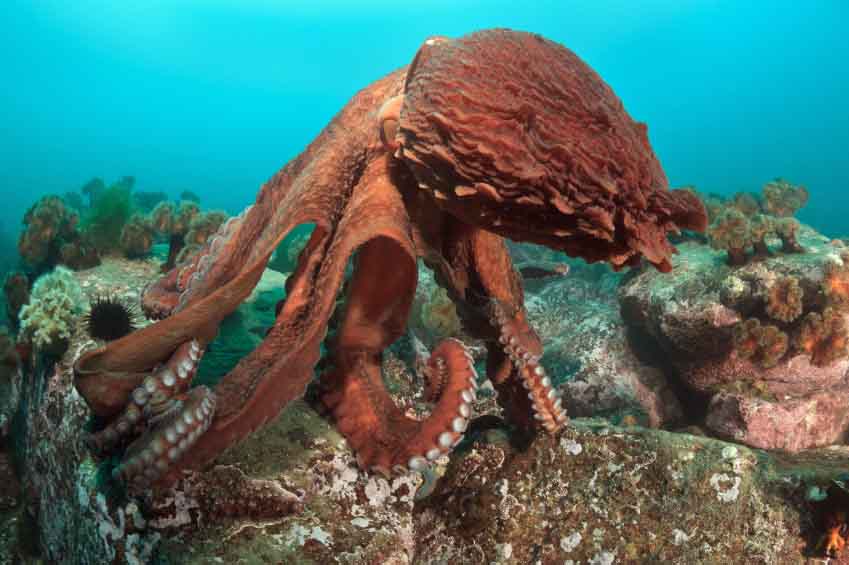The Fascinating Octopus
One of the most fascinating creatures among all ocean life is the octopus. These cephalopods are very symmetric and have eight legs, which is fitting, considering their name. However, unlike their close relatives the snail and oyster, the cephalopod more closely resembles the squid.
A cephalopods will change its color to blend in with their surroundings while they are hunting or hiding from predators. If they catch a fish while hunting, they will wrap their tentacles around it and use their hard beak to tear into the flesh. If you are swimming and exploring ocean life and encounter an octopus, it is important that you do all you can to avoid them. While some are docile and may not try to harm you, others are heavily aggressive and the blue ringed octopus in particular is deadly.
Octopus Moves
The legs on the octopus are a critical piece of their anatomy because they are necessary for their survival. Studies have shown that two of the legs are designed to help the cephalopod to move along the floor of the ocean and to push off when propelling itself to swim. If it loses one of these tentacles, it has the ability to regrow them and they are a smart creature. These aspects make them one of the most fascinating ocean life species.

So, how does this creature swim? They don’t have flippers or fins. They are nektonic when they swim. They will allow water to fill their body and then they squeeze it right back out, allowing their body to shoot backwards in a move that is called jet propulsion. This water is shot through the hyponome which is a tube in their bodies. To boost their speed, the cephalopod will shape themselves similar to a bullet. You’ll notice they swim headfirst in the water and this is the reason why they do that.
Like Breaststroke Swimming
Swimmers will notice that this sounds a lot like the breaststroke. When swimming the breaststroke, swimmer will push the water back and propel their body forward. In this case, the arms of the individual swimming are replacing the hyponome in the cephalopod, as they help to push us through the water.
Of course, this remarkable piece of ocean life will also spend quite a bit of time crawling since it lives primarily on the ocean floor, while showing up in the occasional tide pool. They can do a bi-pedal walk that uses two of their legs, as this helps them to move without drawing the attention of predators.
As swimmers, we can easily find ourselves awestruck by these incredible creatures. They are fascinating to watch in the water and as we learn more about their movements, we can take elements of how they swim and incorporate them into our own swimming ritual. That will allow us to reach faster speeds in the water and to more effectively use our muscles when we are in the water.
Today’s Daily Swimming Workout
Warm-up: 500 using all four swimming strokes in your choice of order and method
20 X 25 alternating butterfly and freestyle, backstroke and freestyle, breaststroke and freestyle
Kick with swim fins streamlining 8 X 75 alternating backstroke and freestyle
6 X 200 as alternating breaststroke and freestyle by 200 with each 200 swum as 50 drill, 150 swim
4 X 300 Individual Medley (75 of each stroke)
4 X 50 freestyle
Warm-down: 200 tai-chi style swimming of your choice
Total: 4100 meters or yards
back to the top of octopus page








